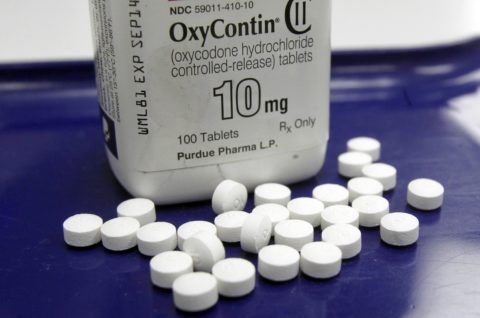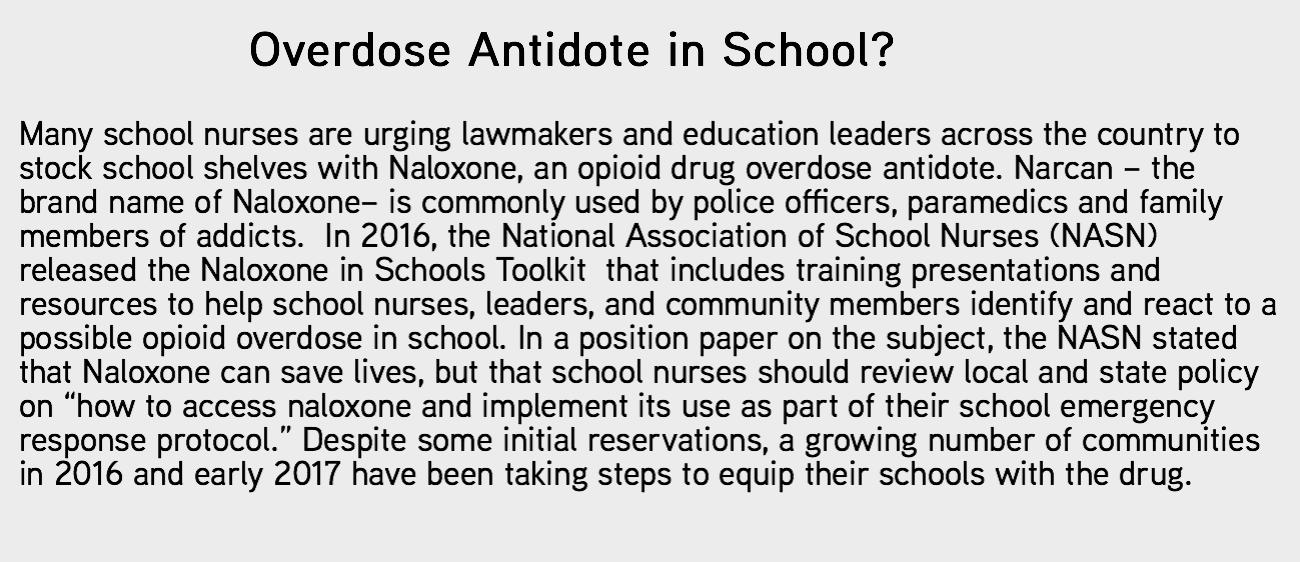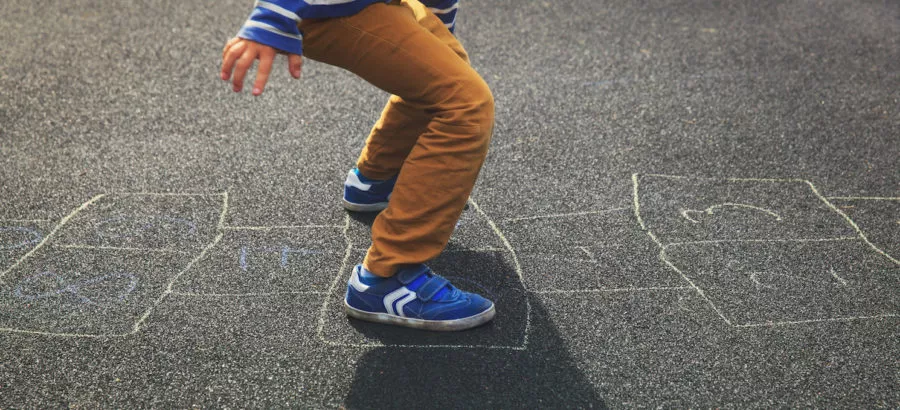The prescription opioid epidemic has affected large and small communities alike on its way to becoming a national health crisis. In 2016, the Centers for Disease Control reported that the number of deaths from overdoses rose sharply again in 2015 and the number of young children and teens hospitalized for overdosing on these painkillers has tripled in recent years.
According to the National Institute on Drug Abuse, the nonmedical use of prescription drugs - mainly opioids such as oxycodone, hydrocodone, codeine, morphine, and fentanyl - is alarmingly high among this age group. (Roughly 80 percent of new heroin users get their start on painkillers.) In 2014, six percent of 12- to 17- year-olds, 12 percent of 18- to 25- year-olds, and 5 percent of persons age 26 or older, used these drugs.
In an effort to curb this crisis, states are looking to public schools to go beyond "Just Say No" and revamp their drug abuse education programs. Much of the focus is now on preparing elementary school students with the right tools to make healthy decisions.
In February, a panel formed by Ohio lawmakers recommended schools implement new drug educational programs that start in kindergarten. Other states have already taken similarly strong measures as educators believe prevention efforts that start early are key to fighting the opioid crisis.
"Students need to learn early the dangers of various substances," says Rebecca King, a school nurse for the New Castle School District in Delaware and a passionate advocate of substance abuse prevention in schools. "Adolescents are vulnerable because they are natural risk takers and are curious. They often think using pain killers recreationally is safe because they are prescribed by a doctor. They need to be taught early the strong addictive properties of this drug."
Teaching Resiliency
This lack of knowledge about opioids and other prescription drugs is dangerous for younger children, explains pediatrician Dr. Rupal Gupta, medical director of Operation Breakthrough Clinic at Children’s Mercy Hospital, because they encounter these substances in their daily lives, inlcuding at home.
“Prescription medicine abuse can start innocently. For young children, it’s important to address situations they are likely to come across – such as finding a pill on the table or a bottle of medicine in a relative’s purse,” Gupta explains. "Or it could be a person sharing his or her medicine with a friend."
"Other times, social determinants beyond a child’s control may lead them into unimaginable situations – such as a parent who provided drugs to their child and contributed to an addiction,” she adds. "Age-appropriate drug education can help children make better choices as they get older.”
 The number of young children and teens hospitalized for overdosing on opioid painkillers has tripled in recent years.
The number of young children and teens hospitalized for overdosing on opioid painkillers has tripled in recent years.
At Brandywine Heights Intermediate School in Berks County, PA, one those "choices" involves how younger students handle peer pressure.
The largely rural Brandywine district started new drug education programs in an effort to combat the recent spike in opioid related deaths in the community. As the school got ready to revamp their program, the district interviewed students who had struggled with drugs.
"They discovered that in almost every case, the first time the students used was in a ‘peer pressure’ situation,” says guidance counselor Heather Kulp.
“Teaching resiliency skills as early as possible is the key,” says Kulp.
Some of the newer drug education curriculums available are tailored for different age groups, targeting the children’s level of understanding. The K-9 curriculum Brain Power! created by The National Institute on Drug Abuse, for example, is more scientifically- focused in its discussion about the brain and the effects of drugs on the human body.
"Adolescents are vulnerable because they are natural risk takers and are curious. They often think using pain killers recreationally is safe because they are prescribed by a doctor. They need to be taught early the strong addictive properties of this drug" - Rebecca King, school nurse, New Castle School District, Delaware
Brandywine implemented the “Too Good for Drugs” curriculum created by the Mendez Foundation. Designed for grades K-5, “Too Good for Drugs” teaches healthy social and emotional skills through song and interactive activities.
In addition to its focus on peer pressure strategies, “[i]t is factual, and relates the effects of drugs and alcohol to something that the students are familiar with, it’s brought to their level of understanding,” Kulp explains.
Kulp is most enthusiastic about how the program promotes communication at home, providing worksheets that are designed for parents and their children to do together.
"These homework assignments help open the lines of communication between kids and their parents about this difficult topic, which is an important piece of drug/alcohol awareness and education,” Kulp says.
The results so far are encouraging.
“I have had students report to me on more than one occasion that they used a refusal strategy that was taught to them in "Too Good for Drugs" in their interactions with classmates, friends, and siblings," Kulp reports. "To me, that is success!”
School Nurses on the Frontline
School nurses are the first responders in any student health emergency, but they also play a critical role in educating about the dangers of opioids and prescription drug abuse. "We want children to learn that medication is to be used wisely and as directed," explains Beth Mattey, Lead Nurse of the Brandywine School District in Delaware and president of the National Association of School Nurses (NASN).
"We don't want to foster the notion of quick fixes with pills. So we try to get to the root cause of why they are visiting the nurse. For example, many students visit us for headaches," Mattey explains. " So we discuss drinking enough fluids, adequate sleep and exercise and emphasize the importance of proper nutrition."
In 2007, NASN partnered with Janssen Pharmaceutical to create “Smart Moves, Smart Choices,” a prescription drug and opioid-abuse prevention program developed for middle and high school students. In 2014, the program was expanded to include the “Start Smart” program for K-5 and offers a wide variety of online tools and resources for educators and parents.
 "It only makes sense to start health education in the early grades. The students will build on the knowledge as they grow and learn," Mattey says.
"It only makes sense to start health education in the early grades. The students will build on the knowledge as they grow and learn," Mattey says.
Rebecca King sees promising results in the classrooms where she has taught the program.
"I taught 'Start Smart' with a group of second graders. I asked pre-and post-test type questions and I did see an increase in their knowledge of medication safety," she recalls
Whether they are based in the classroom or in the nurse's office, educators agree that open communication is key when it comes to teaching younger students about drugs. “Being open and helping them discuss their thoughts in a nonjudgmental way is the first step to helping them become good stewards of their own health,” Dr. Gupta says.
King stresses that is it crucial that schools stay resolute - even if statistics about teenage drug use show any decline.
"Any small shift in data doesn’t mean our work is done. The same happened with tobacco use…but just because the numbers dip a little doesn’t mean we stop educating," King says. "We have to continue and build from kindergarten to high school. We have to educate each year so that our students hear these health messages over and over."


